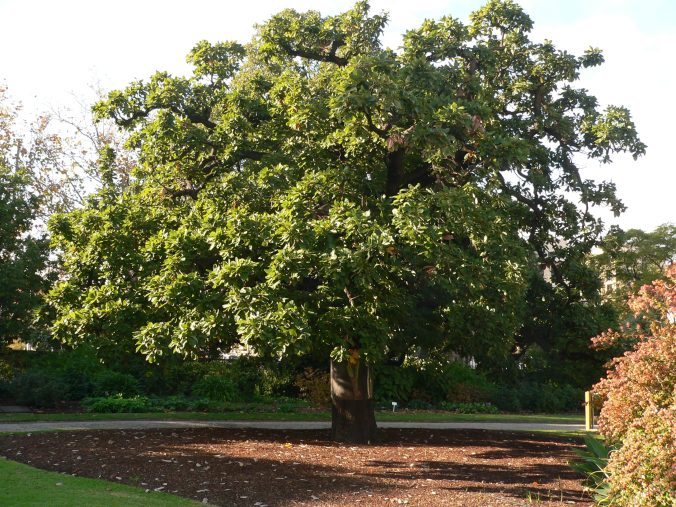Tree planting to mark first all-Australian conference in February 1890 to discuss the introduction of a federal system of government.
Australia’s foundation strong colonial ties continued to be evident in the selection of trees planted to mark formal occasions, such as visits by British royalty or a commemoration by early Sydney-based governors and other dignitaries.
When the NSW Premier Sir Henry Parkes presided over the first all-Australian conference in February 1890 to discuss the introduction of a federal system of government, he planted and an oak tree in the gardens of Parliament House in Melbourne to symbolise Empire superiority and solidarity.
Still present today and known as the Federal Oak it stands in Sir Henry’s words for: “The crimson thread of kinship that runs through us all. Even native-born Australians are Britons. We know that we represent a race, which for the purposes of settling new colonies never had its equal on the face of the Earth.”
Ironically the tree, a Canary oak, (Quercus canariensis) sometimes also called the Algerian oak, does not occur in the Canary Islands, as perhaps Sir Henry and others thought, but is native to Portugal, Spain, Tunisia, Algeria and Morocco.
Sir Henry Parkes … even native-born Australians are Britons. We know that we represent a race, which for the purposes of settling new colonies never had its equal on the face of the Earth.
An Englishmen by birth, Sir Henry was a staunch advocate of English customs and traditional values. His planting of an oak tree was seen as being emblematic of everything good and noble about being English, even for those born in Australia at the time. He was instrumental in shaping the fledgling Australian Federation, its values, priorities and policies in the early years of the twentieth century.
The Canary oak is a medium-sized deciduous to semi-evergreen tree growing to 20-30 metres tall with a trunk up to 1.5 metres in diameter. The leaves are 10-15 centimetres long and 6-8 centimetres broad. The flowers are catkins, the fruit is an acorn 2.5 centimetres long and 2 centimetres broad, in a shallow cup.
Oak trees all belong to the genus Quercus and are native to the Northern Hemisphere. They represent a significant family of trees and include both deciduous and evergreen species. Oak trees extend from cool temperate to tropical latitudes in the Americas, Asia, Europe, and North Africa. The famous English oak, Quercus robur extends across Europe and is also called French oak and European oak – all the same species.
North America has the largest number of oak species, with approximately 160 species in Mexico of which 109 are endemic and about 90 in the United States of America. The second greatest area of oak diversity is China, with approximately 100 species.
